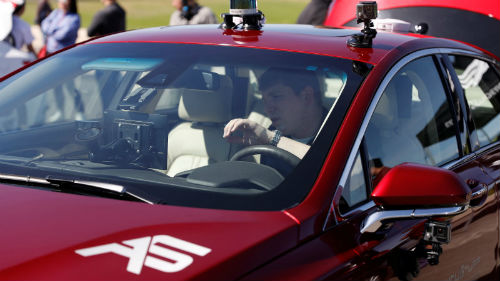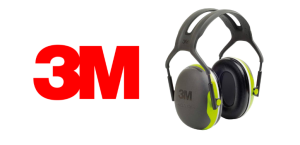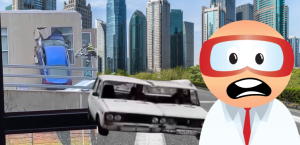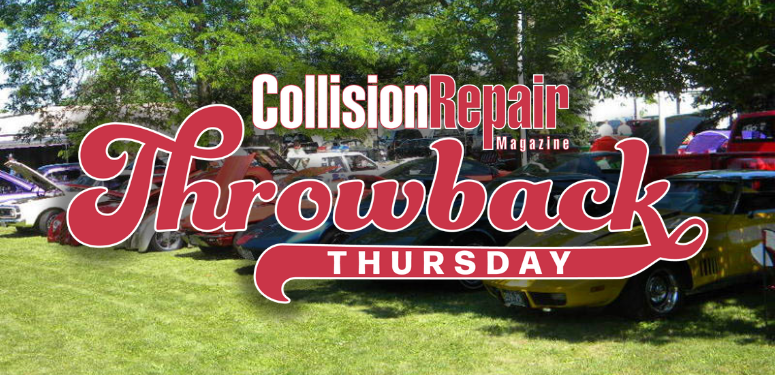By Jeff Sanford
Toronto, Ontario — April 9, 2017 — In this week’s Autonomous Report, we look at how advanced technology may lead to driver complacency and more crashes, the latest update on the court battle between Google and Uber over allegedly stolen tech, how a race between nine autonomous vehicles (AVs) only saw four finish without human help and much, much more!
– Remember when Anti-Lock Braking Systems (ABS) first hit the fleet? There were plenty of anecdotes of drivers rear-ending other cars and then exclaiming, in honest bewilderment, “But I have ABS!” It looks like telematics experts expect something similar to happen with advanced driver assistance systems of all types, according to a report from our content partner, Repairer Driven News: “An informal poll of an insurance-heavy audience and a panel of insurance and telematics experts suggested Thursday that advanced driver assistance systems might breed complacency among drivers—which could help mitigate an impending decrease in collision frequency predicted as well.”
The webinar, The Risk of Distracted Driving in a Digital Era, was hosted by TU-Automotive in association with the Connected Car Insurance USA 2017 Conference & Exhibition.
“Following a discussion about distracted driving’s impact and solutions, the TU-Automotive webinar asked for predictions about ADAS, including whether it could lead to decreased situational awareness,” wrote John Huetter for Repairer Driven News. “Webinar audience members—how many there were was not disclosed, only the existence of a ‘very strong amount of insurers listening in’– predicted both a major reduction in crashes and claims payouts and overreliance on ADAS technology.”
– An article on Quartz considers the insurance question and talks about the rising costs of the equipment used on AVs. The article notes that the Google’s AVs are using all the modern parts that straddle “the border between autonomy and human-controlled.”
Today a side mirror can come loaded with parking assist, automatic braking, and blind-spot detection devices. According to the article, “For consumers, a ‘regular’ side view mirror replacement would cost $390, while one with cameras for collision avoidance would cost $840.”
The increase in complexity, naturally, is driving up the cost of repairs. The story goes on to quote Mitch Becker, a technical instructor for ABRA Auto Body and Glass, who says, “Auto glass companies are struggling with this now because no longer is it just a windshield replacement. It’s a front lens of a camera replacement.”
The article also notes there are new costs for cars that have been in accidents and need sensors recalibrated, cameras and lasers re-aimed, etc. Repair costs may rise significantly, at the very same time premium income takes a hit. The story quotes Warren Buffett as saying, “If the day comes that a significant portion of the cars on the road are autonomous, it will hurt Geico’s business very significantly. If they’re safer, there’s less in the way of insurance costs, that brings down premium buy significantly.”
– A race between nine self-driving cars in Northern California found only four made it over the finish line without human assistance. One of the participants was quoted as saying, “Someday you will be able to see machines do things that people aren’t able to do. Today we are just trying to catch up with your teenage child’s first drive.”
According to a report by Reuters, “For the small companies and students, the race course offered a large, safe testing environment. Deciding how to slow down for a turn, for instance, is a big question for a car that drives itself, and startups cannot necessarily afford access to a major testing facility without pedestrians … Some cars used GPS and other location tracking to follow digital maps to get around the course.”
 |
|
| The AutonomouStuff vehicle at a self-driving race held in California. Each car had a {source}<br/>{/source}human driver as back-up. Only four managed to finish without assistance. |
– Google is suing the tires off Uber for alleged theft of its LiDAR design. LiDAR is one of the basic technologies of AVs. So far the lawyers for the Google car division, Waymo, argue that Uber is stalling in terms of searching its files for the alleged stolen docs. A report on Bloomberg notes that Uber agreed this week (at the judge’s orders) to, “… dig deeper into its computer servers to look for the files that Waymo claims were stolen.”
Google also filed new documents in the case suggesting that the employee that stole the documents made up to $120 million “on the side” by creating competing businesses while he worked at Google.
– The San Francisco self-driving car startup Cruise Automation (now owned by GM) plans to add more than 1,100 jobs in the city. The average salary of the new hires will be $116,000.
– A consumer advocacy group, Consumer Watchdog, contends that the “The credibility of autonomous vehicle policy issued last year by the National Highway Traffic Safety Administration was completely undermined when former NHTSA chief Mark Rosekind announced he has taken a job with robot car developer Zoox.”
Consumer Watchdog, in a press release, “called on the Senate to refuse to confirm the next nominee for NHTSA administrator unless the nominee pledges not to work as an employee or consultant to the auto industry or developers of self-driving car technology for at least seven years after leaving the position.” The press release goes on to state that, “Consumers can have no confidence that NHTSA’s autonomous vehicle guidance was developed with public safety in mind when Administrator Rosekind was shopping his resume to potential future employers in the robot car industry while the policy was being drafted.”
The NHTSA released its Federal Automated Vehicles Policy last September. A key provision is a voluntary 15-point safety assessment. The organization adopted guidelines for AVs instead of enforceable regulations. Consumer Watchdog goes on to say that the “ongoing revolving door between top NHTSA staffers and the auto industry they supposedly regulate is not only unseemly and unethical, but fundamentally undermines public trust in the agency’s rules and regulations.”
– A report by Bloomberg suggests that Uber’s self-driving cars may take the same sorts of risks human drivers do, with the same results. An incident occurred in Tempe, Arizona where a human-driven Honda turning left failed to yield and hit the Uber Volvo SUV.
According to Bloomberg, “… the Tempe Police Department report … recounts a complex story. The Uber Volvo SUV, outfitted with autonomous driving sensors, was heading south on a wide boulevard with a 40 miles-per-hour speed limit. It had two of the company’s test drivers in front and no paying passengers. The light turned yellow as the vehicle entered an intersection. A green Honda on the other side of the road was trying to make a left at the light. The driver thought it was clear and turned into the oncoming Uber SUV, according to the police report.”
The Uber vehicle was in autonomous mode at the time of the collision.
“Others involved in the accident, though, didn’t imagine a robot behind the wheel. Alexandra Cole, the driver of the Honda, told police that she could not see any cars coming when she decided to make the left turn … Another witness told police that Cole was not at fault. ‘It was the other driver’s fault for trying to beat the light and hitting the gas so hard,’ Bryan Torres told police in a statement. ‘The other person just wanted to beat the light and kept going.’”
A New York Times report from February notes that one of Uber’s self-drivers ran a red light in San Francisco last year, and the company’s mapping system failed to recognize traffic lights on five other occasions. You can check out the Bloomberg report in the player below.
– Nuro and CarOne are the 28th and 29th entities to receive a license to test autonomous vehicles on public roads in California, according to a report by self-driving blog The Last Driver License Holder: “The Nuro-founders are two former employees of Google’s self-driving group … Nuro plans to build a ‘Level 4’ autonomous vehicle. There is no information yet about CarOne.”
-The up-coming 2018 S-Class from Mercedes will take control of the car in more situations than ever. Honestly, it doesn’t sound like there is much left for the driver to do. The luxury vehicle will include a laundry list of advanced features that we’ve seen recently, such as active lane change/keeping assist, emergency stop assist, etc., but also some we have seen much until now, such as the ability to recognize traffic signs and active speed limit assist, which reads signs, even temporary ones for road work, and adjusts its speed accordingly. Naturally, the driver will be able to override this function.
– Ward’s Auto ran some comments this week from Ken Washington, Ford’s VP for Research and Avanced Engineering, explaining why we’re seeing such a boom in AVs. During his keynote address at the 2017 SAE World Congress Experience, Washington said it’s a result of soaring computing power and the maturation of technologies related to sensors, artificial intelligence and data acquisition.
“Why are we talking about new mobility modes and autonomy so much more now than 10 years ago? It’s because all these new technologies are within our reach financially and technically,” he said. “There are technologies that allow us to predict where a vehicle is going, and it can be located on the road within a few centimeters. (There are) technologies that allow us to know the road topography, predict where vehicles will be, predict and classify objects, see what is different from what is on a map, see around the vehicle in 360 degrees and plan a safe path.”





































